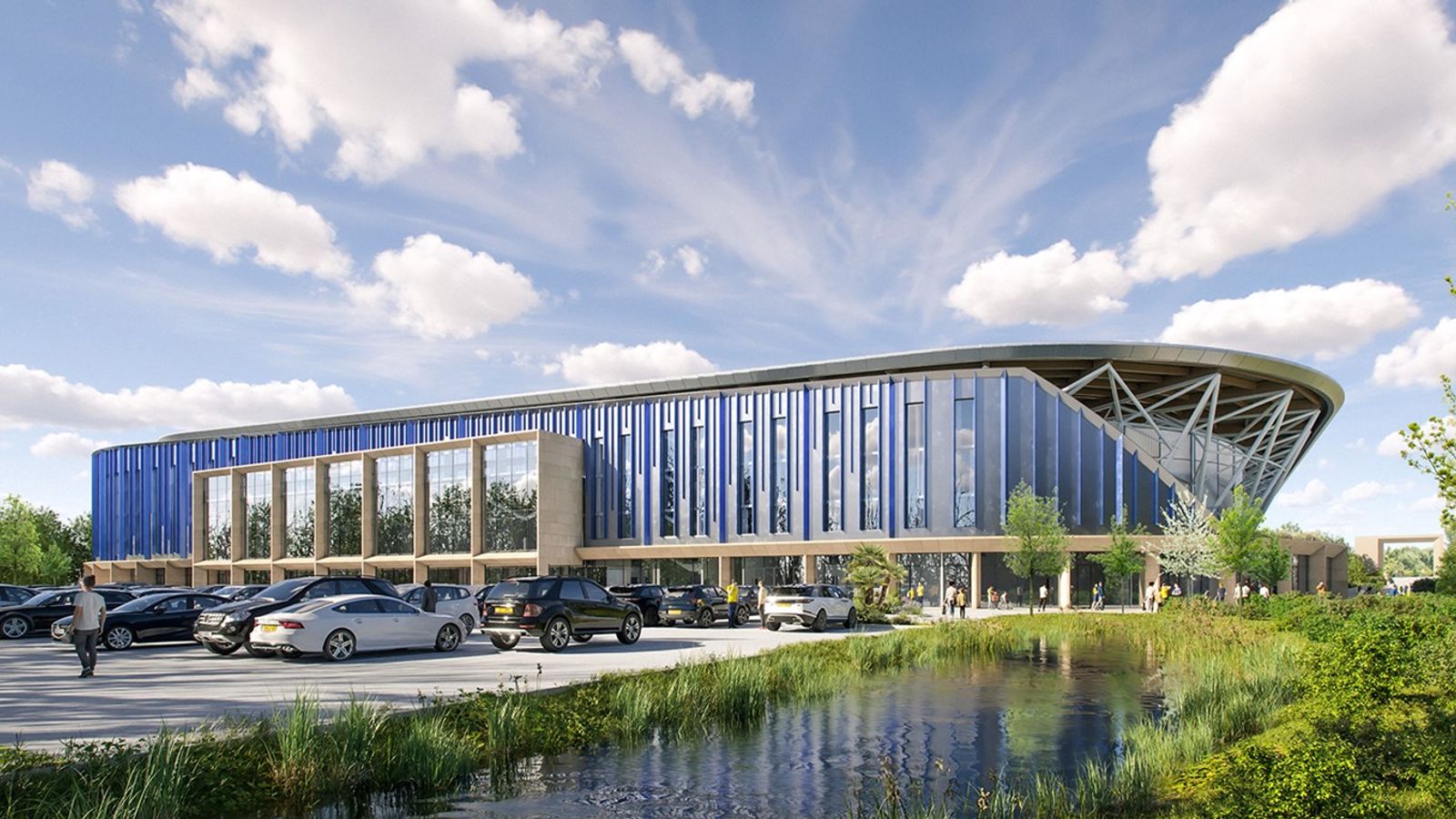
Oxford United have announced plans to build the first stadium in the country powered solely by electricity to create a sustainable new home.
As part of the club’s pledge to deliver a state-of-the-art stadium it has outlined further details behind the proposed low-impact development. The club would use a low-carbon energy supply to create an ‘all electric’ stadium, with power also generated by solar panels.
Jon Clarke, Development Director at Oxford United, said: “The standout element of the stadium is it will be the most sustainable mid-sized sports venue in the country. We want to make the most of the opportunity to create something special – it would be one of the greenest football stadiums to be built.”
The proposed 16,000 capacity stadium at the Triangle, near Kidlington in Oxford, would not use any high carbon intensity fossil fuels such as gas. Annually, electricity is now a cleaner fuel than natural gas.
Renewable energy sources, including 3000m² of solar panels on the roof, along with energy efficiency measures would achieve radical carbon emission reductions. The solar panels would generate enough energy to boil around 3 million 3-litre kettles per year.
Modern building fabric design and heat recovery solutions would also be used to maximise thermal efficiency. The use of another low-carbon energy technology, air source heat pumps, as the development’s primary heat source would provide an estimated 80% reduction in CO2 emissions per year when compared to gas boilers, when aggregated over the year.
The news comes days after the club announced it has signed the UN Sports for Climate Action Framework to help tackle the climate crisis. By joining the Framework, the club has underlined its pledge to playing its part to ensure the sports sector achieves a low-carbon future. The club is committed to halving its carbon emissions by 2030 and achieving net-zero by 2040.
The stadium would also include drainage systems, rain storage and recycling solutions to re-use rainwater, while plans to enhance biodiversity on the land at the Triangle would achieve a significant net gain.
Mr Clarke added: “The stadium design has sustainability and visitor experience at its core.
“We’ve maximised modern technology, design and progressive thinking to create the benchmark for future design of stadiums with the protection of our planet in firm focus.
“By avoiding natural gas usage on site and by using highly efficient equipment to serve a high-quality building, the carbon emissions associated with this unique venue will be radically reduced resulting in a very low impact home.”
In addition to onsite renewable energy through solar panels, the stadium design maximises efficiency in all aspects to minimise energy use and associated carbon emissions. It would include:
- High performance construction with optimised thermal performance to reduce the demand for cooling in summer while retaining heat in the winter.
- High efficiency air source heat pumps to provide internal comfort, capturing heat from the external ambient air to produce the heat source for general heating, domestic hot water generation and undersoil pitch heating.
- A fully automated Building Energy Management System will be employed to monitor, control and report energy use, to ensure optimal operation across all seasons and long-term minimisation of energy consumption.
The plans for the stadium include a 180-bed hotel, restaurant, conference centre, health & wellbeing space, gym and a community plaza. The club is currently preparing to submit its full planning application.
Future of football: The sustainability challenge in stadium design
Sustainability is an issue in all walks of like and a topic for everyone to think about, but in particular in architecture and construction it is a critical issue. In League Two, Forest Green Rovers are “planning to build the world’s greenest stadium”.
Jim Heverin, a director at Zaha Adid Architects who has worked on projects including the London Olympics and the recent Qatar World Cup, is currently project director for of the Eco Park Stadium project for Forest Green.
The brief at Forest Green Rovers is to create the world’s greenest stadium as the club look to raise the profile of sustainability in sport, with Eco Park marketed as “the world’s first timber stadium.”
Heverin, who believes football needs to help raise awareness of sustainability, is hopeful the project can help show what can be done in the future as the environment continues to be at the forefront of everyone’s thoughts.
“The amount of carbon involved in stadium construction is a big subject,” he said. “Football needs to be cognizant to that as much as anyone else.
“There’s a responsibility there to make sure that everything is heading towards net zero.
“The brief at Forest Green was to make the stadium net zero,” he added. “For the owner, the stadium needs to be an embodiment of his sustainability and low carbon principles.
“When you look at a club like Forest Green Rovers, it’s interesting how good they are at chasing net zero and their carbon considerations through the whole supply chain.
“It’s not just stadiums, where is the kit coming from? Where is the food coming from? What do we use as fertiliser? Where is that coming from? They question everything and are making sure it’s sustainable and coming from renewable resources. They are taking responsibility for all of that and if a small club can do it, the bigger clubs need to be doing it too.
“I hope that is the value that comes out of a stadium and project like Forest Green Rovers. It shows that you need to be doing this and it is part of the future of being progressive off the pitch as much as on the pitch.”
Future of Football: What does the future look like for stadium development? Read more here.

